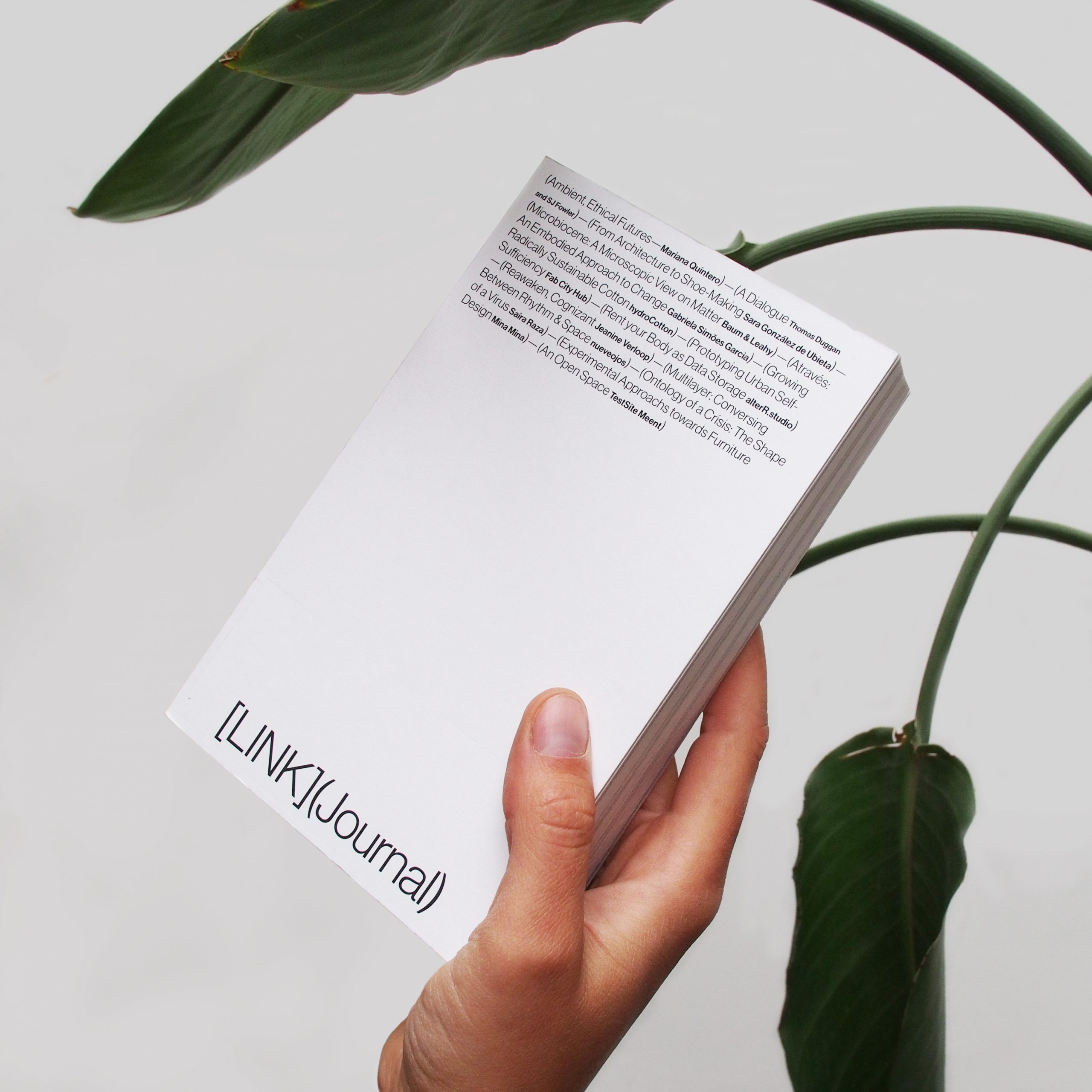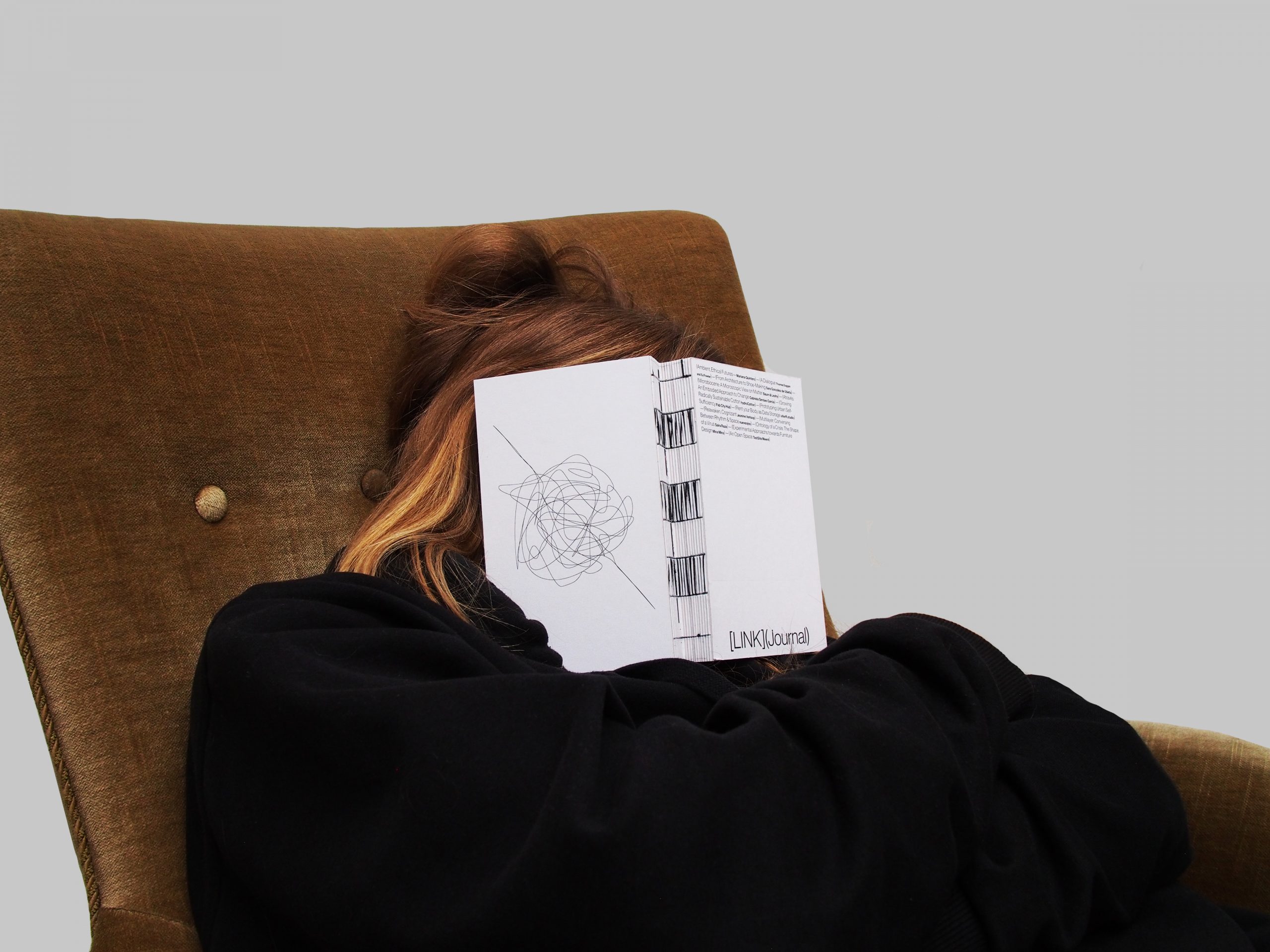LINK Journal live

Useful information
- Team members
- Julia Bertolaso Veronica Tran
- Country
- Spain
- Keywords
- Open-source Publication Hybrid Design Trans-disciplinary Experimentation Book Emergent futures Design literacies Live Distributed Process
Short Description
A trans-disciplinary journal exploring in-betweens spaces, modes of communication and translations.
Detailed Description
It is an enquiry into future thinking and cultural shifts. LINK Journal is a publication and an experiment. It was born from a curiosity in hybrid environments; looking at the digital systems in relation to the physical environment. It looks into the theme of translations as a way to articulate, visualise and communicate multiple layers of information that surrounds us.
It’s in this space that we question where lines converge between data, information and knowledge, within different cultures, communities and societies. But also question the role of design in defining how information will manifest in diverse environments in the future.
A fertile ground to discuss an ‘in-between space’ - mediating conversations, debates, questions, and most importantly, methodologies that are used in translating raw data into knowledge.
Our values are — fluid, experimental, transparent and design-lead, and it leads us into shaping LINK Journal’s first issue ‘States of Matter’.
Project Details
- Does your design take social and cultural challenges and human wellbeing into consideration?
LINK Journal aims to open up conversations with individuals and forward thinkers who are working towards change. This journal enables a platform that is inclusive of different spectrums of thought from a multitude of practitioners, all from hugely diverse backgrounds. It is this inclusivity that enables us to discuss an array of social and cultural challenges via these contributions:
Fab City Hub (urban/food futures)
Sara Deubieta (circular economy, education)
hydroCotton aka Materra (material sciences)
Gabriela Garcia (embodied, personal approaches to change)
- Does your design support sustainable production, embodying circular or regenerative design practices?
The considerations made during the conception of the journal start right from the beginning, with the size of the designed book — carefully thought through to make its production more accessible. The format is smaller than an A5 sheet of paper, offering the possibility of easily making the book at home using standardized paper sizes, with the documentation of how to make your own LINK Journal being provided publicly, enabling readers to choose their own locally accessible tools. Following this method, the book does not need to be printed in one place and shipped over the world, but rather its design is shared online for anyone over the world to make it from where they are, avoiding costly shipping.
We have been continuously investigating ways of producing the book in order to take a responsible approach towards our natural environment, and in the case of the reward being granted, we would produce the following book using our previous research, using more sustainable ink - such as Air INK created from captured air pollution.
Furthermore we intend to get in contact with local makers, to collaborate with them and make a paper made out of recycled, possibly organic material. For this, Fab Lab Barcelona would be a great point of contact for this material experiment. All together, this new version of the printed book would be more aligned with our values but would also represent, directly in its physicality, the many emerging practices and technologies used to embody more regenerative and circular design practices. This is ideal production for this first edition ‘States of Matter’.
In addition to LINK’s own method of production, the contents of the journal also discuss various practitioners who embody a circular practice.
- Does your design use principles of distribution and open source?
LINK Journal is an open-source publication, highlighting connections between disciplines and arguments to address the narratives of 2020. Transparency of thought is essential for the purposeful development of this design experiment. With the aim of making our thought process an open book, we communicate the process in with total transparency for the readers to gain a holistic understanding of how this medium is explored and how it used it as a tool to communicate common knowledge; sketches, scraps, previous versions of writing, communications, budgeting, design are published as a part of the medium and will be fully documented in Notion, accessible via our website link-journal.com. The entire digital version of the book is available on GitHub (https://github.com/link-journal/linkjournal/blob/main/link-journal.pdf) and the many references created through a collaboration with TSTST can be found on HotGlue (https://tstst.hotglue.me/). The multiple ways and methods to create this book is entirely explained using various printing machines.
- Does your design promote awareness of responsible design and consumption?
This collaboration started with questioning design’s role in shaping the world we want to live in both today and tomorrow. Utilising a critical mindset, we defined LINK’s values and developed the project with great awareness of what can be considered responsible design practices. It is a project about what design could and should be, through the eyes of many different people. This is what we communicate through the diverse curation of the content found in this first edition of LINK Journal. We hope it helps designers and readers understand and discover the many mediums of communication and forms of information that we navigate daily, and how it shapes who we are and our environment.
Starting from the desire to support practitioners and their visions, we created this space with the aim to articulate and visualise layers of the mixed realities, differing perspectives and invisible systems found in a hybrid world. By concretizing those ideas, systemic changes can be made, in the ways of seeing, feeling and doing, for preferable futures to be achieved. Through participation in the design process and decision making, our contributors and collaborators communicate the process in its entirety.
Images


